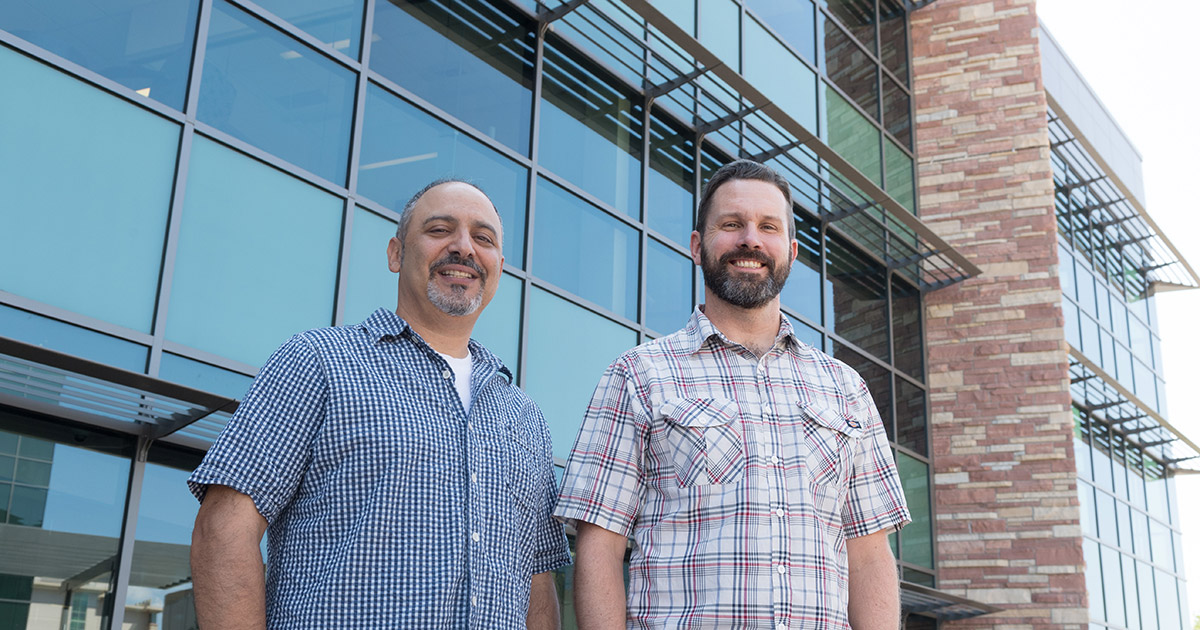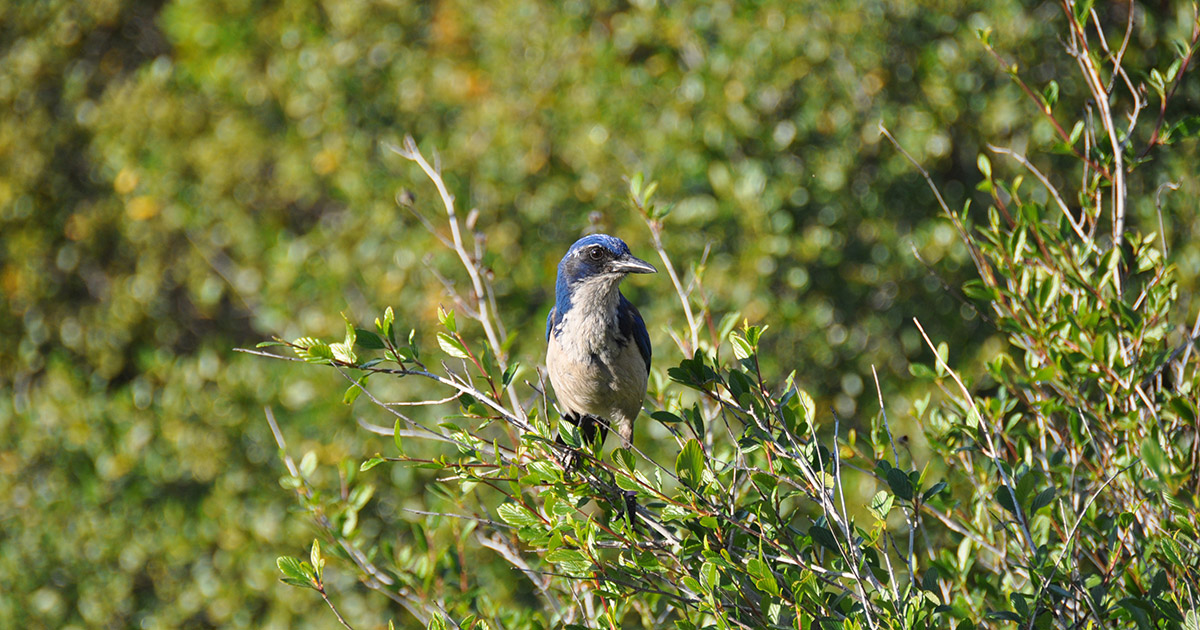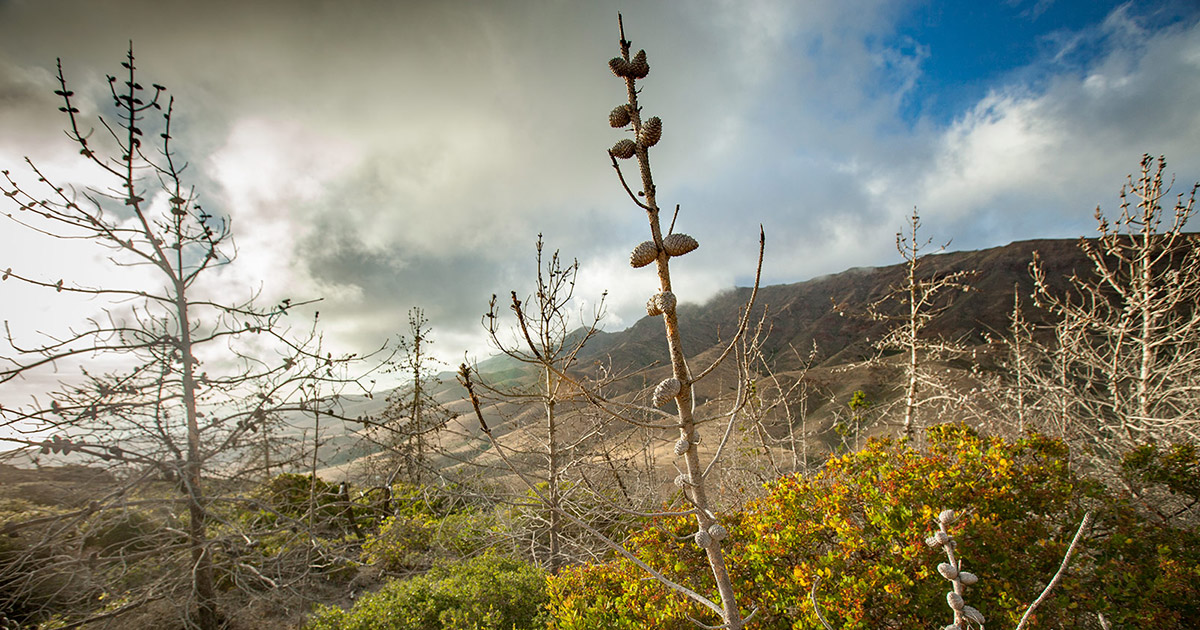In nature, organisms are constantly adapting to their surroundings. It’s why animal or plant populations with the same set of genes will do different things in different environments.
These adaptive divergences can occur within fewer generations, and at smaller spatial scales, than classic evolutionary theory would have us believe. Launching a new study, Colorado State University biologists are diving into the question of just how small these scales could be. To find out, they’re studying a rare, isolated bird that, it turns out, is a bit of a homebody.
The island-scrub-jay, the only North American island-endemic bird species. Provided/Cameron Ghalambor
Researchers led by Cameron Ghalambor, professor in the Department of Biology, are launching a National Science Foundation-supported study of what evolutionary biologists term “microgeographic” adaptation strategies of island scrub-jays, North America’s only island-endemic bird. Island scrub-jays live exclusively on Santa Cruz Island, one of the Channel Islands off the southern California coast.
The study is aimed at understanding how isolated species like scrub-jays somehow manage to genetically diverge, creating sub-populations that reflect specific, adaptive traits. That’s despite living in an area of less than 100 square miles, with plenty of opportunity to interbreed. What the researchers learn could provide new insight into the mechanisms by which individuals in a single population diverge across habitats, and what that could mean for conservation biology, biodiversity and evolution.
Supported by a three-year, $850,000 NSF grant, Ghalambor will be joined by longtime collaborator W. Chris Funk, professor in biology and director of the Global Biodiversity Center in the School of Global Environmental Sustainability; and biology graduate student Rebecca Cheek. The project includes collaborators Scott Sillett and Brandt Ryder from the Smithsonian Institution, Scott Morrison from the Nature Conservancy and Paul Hohenlohe from the University of Idaho.
Building on previous work
The study will build on the foundational work of former biology graduate student Katie Langin, who spent several months on Santa Cruz Island between 2009 and 2011 documenting island scrub-jays’ divergent sub-populations from one end of the island to the other. During that previous study, Langin observed peculiar differences between scrub-jays found on different parts of the 22-mile-long island.
First, even on such a small island, east side birds tended not to go to the west side, and vice versa; they are true homebodies and stay close to their parents’ territory. Second, as if speaking different dialects, east side and west side birds had distinct vocalizations. Finally, Langin found that birds in three distinct, isolated pine forests on different parts of the island all had longer, thinner bills suitable for opening pine cones and extracting seeds. This was in contrast to the scrub-jays in more extensive oak forests, which had shorter deep bills that are more suitable for extracting acorns.
A bishop pine cone stand on Santa Cruz Island. Provided/Cameron Ghalambor
Surprisingly, birds in each pine stand were not genetically more closely related to each other, but instead were more closely related to birds in nearby oak forests. This suggests there have been three independent cases of birds moving into pine habitats and evolving differences in bill shape. The scientists were puzzled by how such distinct differences could arise and be maintained, despite the pine and oak-preferring populations being right next to each other.
“We were seeing these differences at extremely small spatial scales, and these patterns are repeated across all three pine stands,” Ghalambor said.
Such adaptive divergence patterns are more commonly found across broad scales, many miles apart, where there is little opportunity for organisms to mate with each other – not in such close proximity as the Santa Cruz scrub-jay populations. Theory states that if the birds in adjacent pine and oak forests are mating and exchanging genes with one another, it would be very difficult to maintain such distinct traits so close together.
In field work that will start later this year, the team will return to Santa Cruz Island to further study how much the birds move and overlap with each other. They will use genomic analysis to identify genes that differ between birds from either the pine or oak habitats.
They will also trap birds and outfit them with bird-sized GPS backpacks to observe their patterns of movement. “If you were born in a pine stand, do you prefer to go back to pine? Or will you also go to oak?” Ghalambor said. “Especially in those places where oak and pine are closer to each other, and the birds really do have a choice, what choice do they make?”
Finally, the researchers will study whether males and females show a preference for birds that sound like they do. That would be a potential explanation for how scrub-jays maintain trait differences within such small geographic boundaries, and sustain them.
More subtle biodiversity
Results from the study could offer new insights into a little-studied type of biodiversity that involves subtle variations within species. This variation could be fueling larger, more obvious and better-documented biodiversity patterns.
“The jays provide a window into letting us understand those processes and mechanisms in which a single population can then become diversified into many forms.”
The work could lead to conservation strategies for the island scrub-jay, which is labeled vulnerable according to the International Union for Conservation of Nature. Information about scrub-jays’ microgeographic differences could inform future efforts to repopulate neighboring Santa Rosa Island with the bird, which disappeared from there 200 years ago due to habitat destruction.
The researchers will also partner with the College of Natural Sciences Education and Outreach Center to design “jay kits” appropriate for K-12 students to learn about adaptation and survival in nature. The educational kits will be modeled after existing Trinidadian guppy kits that Ghalambor also helped design during a previous project.



